Содержание
- 2. Today’s Objectives to briefly outline the five parts of Use of English. to reflect on how
- 3. CAE - Use of English What does the candidate have to do in each part? How
- 4. Part 1 – Multiple Choice seanarnett.com 12 spaces 12 marks
- 5. Part 2 – Open Cloze seanarnett.com 15 spaces 15 marks
- 6. Part 3 – Word Formation seanarnett.com 10 spaces 10 marks
- 7. Part 4 – Gapped Sentences seanarnett.com 5 words 2 marks Not in FCE
- 8. Part 5 – Transformations seanarnett.com 8 transformations up to 2 marks each
- 9. The CAE Teacher My students don’t seem to be getting any better. I don’t feel as
- 10. Dictation seanarnett.com Look at page 2 of your handout. I will read out which words are
- 11. Exploting the Text seanarnett.com Rather than just set this as a Multiple Choice Task, what else
- 12. Read the text and answer the questions. 1) What is the Wave Hub? 2) Which group
- 13. Whose wave power is it? Construction of the world’s biggest wave-energy installation is going ahead off
- 14. seanarnett.com Collocation
- 15. Usable ‘Chunks’ of Language a number of different XXs in full operation an enormous step forward
- 16. Vocabulary Comprehension seanarnett.com
- 17. Text Cohesion/ Features of Genre Explanation of the unknown for the reader = a giant electrical
- 18. Textploitation Reading Text Comprehension + Speaking Language Work i.e. verb patterns, verb tenses, active & passive
- 19. “An important principle underlying the importance of grammar and vocabulary into the syllabus is that they
- 20. Part 2 – Open Cloze Read the text on page 8 and give it a title
- 21. Part 2 – Open Cloze Work with your partner. Which words do you think will be
- 22. Part 2 – Open Cloze Work with your partner. Which words do you think will be
- 23. seanarnett.com Students complete the task.
- 24. seanarnett.com Students identify usable ‘chunks’ of language.
- 25. Mining set foot on have since + P.P. household names less well-known mentioned in the same
- 26. Collocations, Fixed Expressions & P*****l V***s seanarnett.com to be mentioned in the same breath as to
- 27. Activities write sentences using the phrases for homework. dictate the sentences to their partner who: a)
- 28. Follow Up seanarnett.com When students have written the sentences and handed them in, the teacher can
- 29. seanarnett.com Test-Teach-Test Is anyone familiar with this technique? 2) What does it entail?
- 30. Scaffolding What are relative clauses? How many do you know? When are they used? Which connectors
- 31. Answers 13) become 20) whose 27) however 14) who 21) on 15) though 22) over 16)
- 32. Reading! seanarnett.com How many of your candidates read outside of the classroom? What do they read?
- 33. Part 3 – Word Formation How do you normally teach Word Formation in class? 2) What
- 34. seanarnett.com
- 35. Happy Families seanarnett.com Work in groups. Create a set of cards.
- 36. Word Formation - Spelling Crosswords (Missing Information) Hangman (as a whole class/ in groups/ in pairs)
- 37. Part 4 - Gapped Sentences seanarnett.com NOTE: As of January 2015 this part will cease to
- 38. Part 4 - Gapped Sentences seanarnett.com
- 39. Part 4 - Gapped Sentences seanarnett.com Look at the options we have mentioned. Can it still
- 40. Part 4 - Gapped Sentences seanarnett.com Does the third sentence confirm our chosen word as the
- 41. Part 5 - Transformations What do students have to do in this part of the exam?
- 42. Part 5 - Transformations Students have: an original sentence a key word a half-completed sentence Students
- 43. Transformation Ladders Cut out your transformations. Line them up in front of you. Decide who starts.
- 44. Transformation Ladders What is the purpose of the ladders? Is there any way they could be
- 45. Paraphrasing Pelmanism seanarnett.com
- 46. Autonomy How do we promote autonomy outside of the classroom? encourage students to pursue their interests.
- 47. Useful Resources Burgess, S. & Head, K. 2005 How To Teach For Exams Longman – Chapter
- 49. Скачать презентацию

















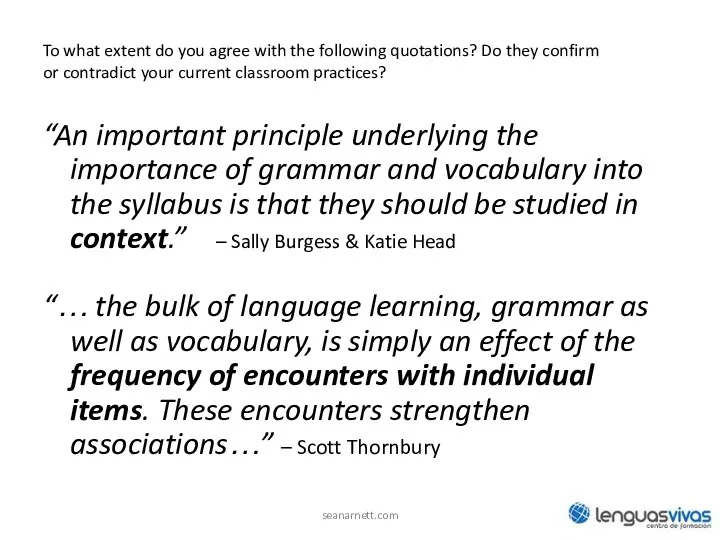

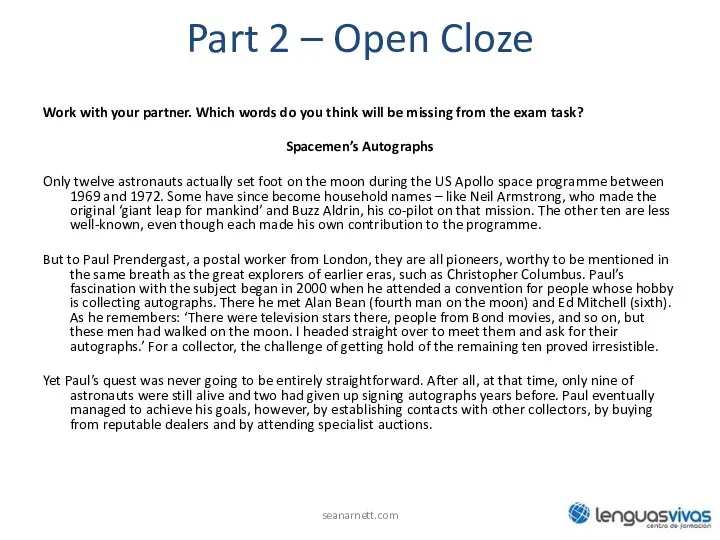
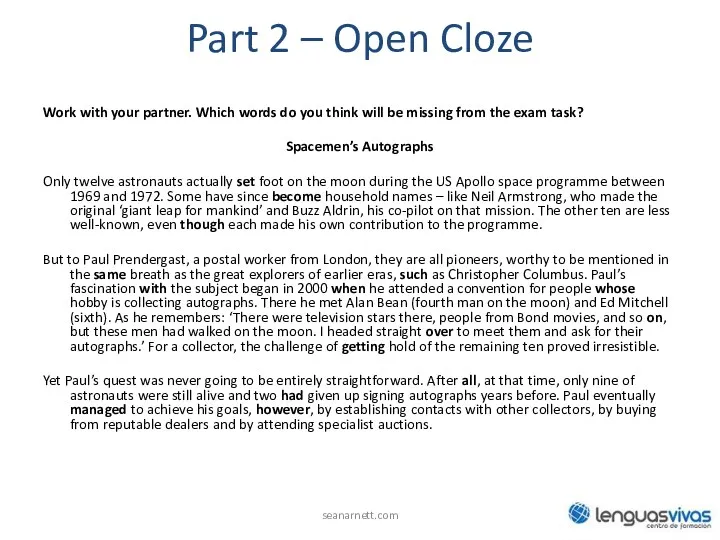

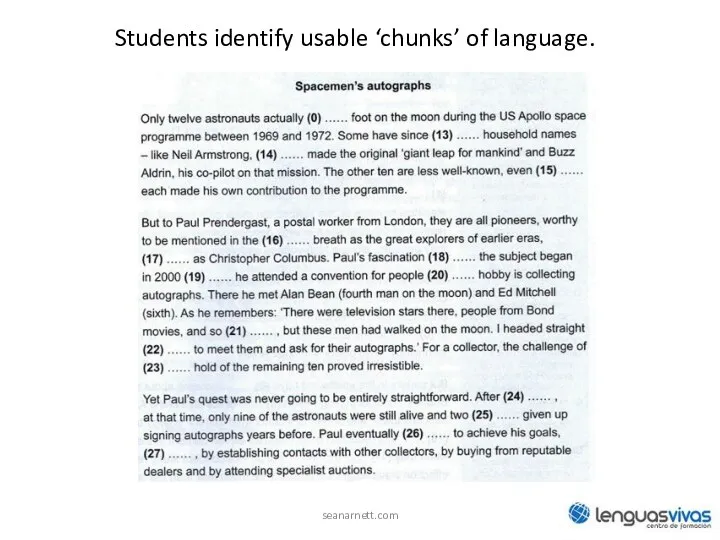
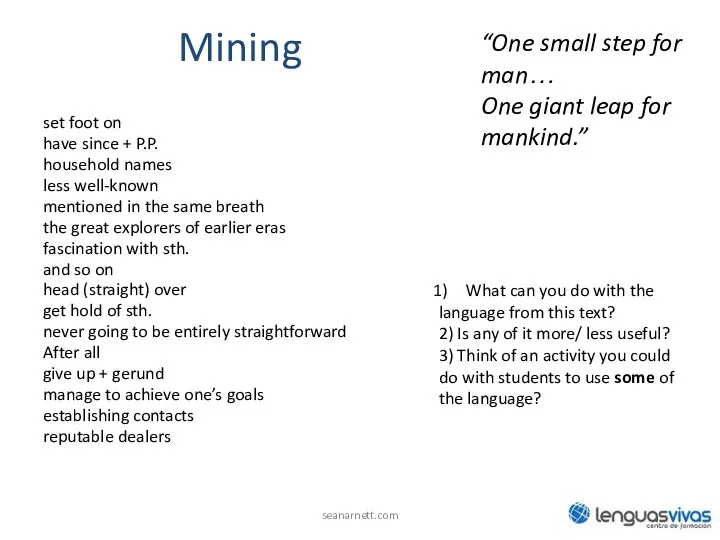
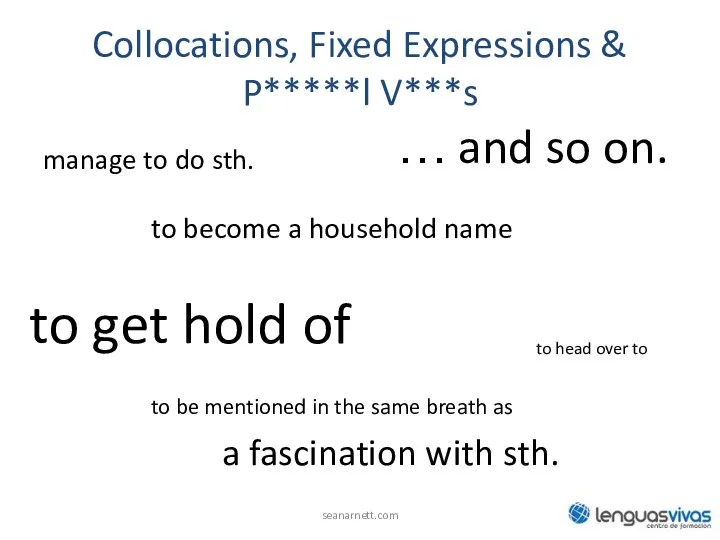
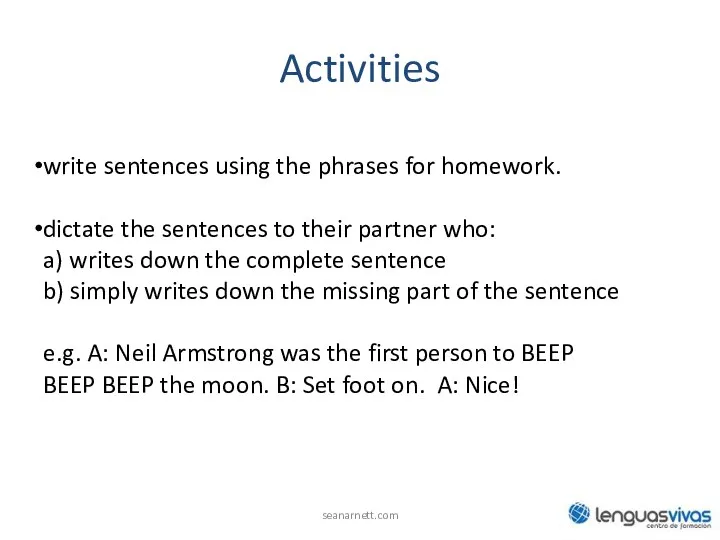
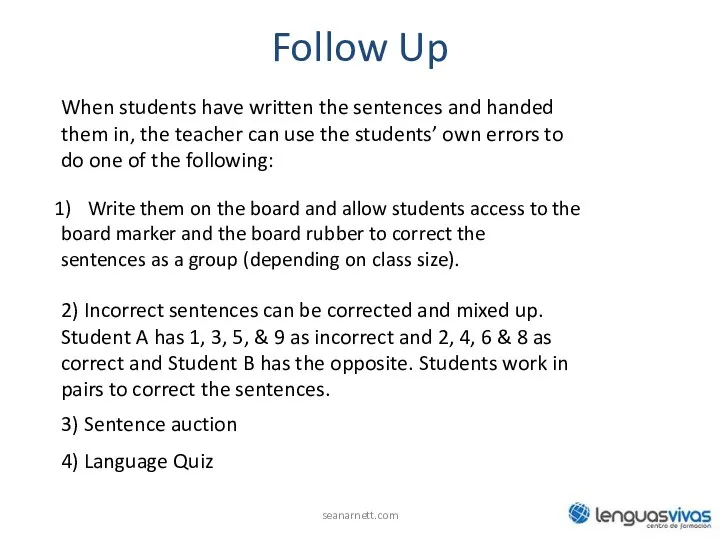
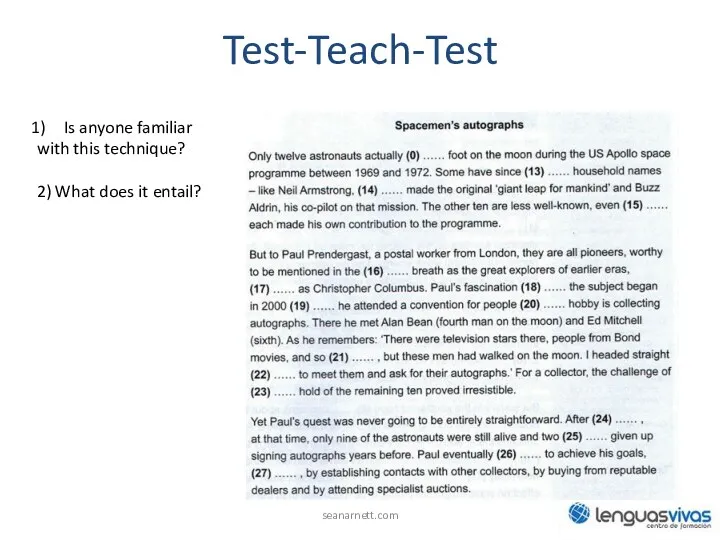
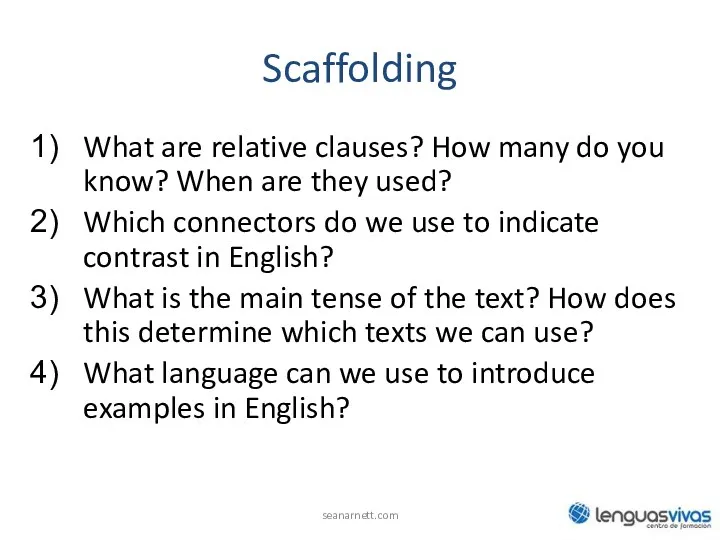
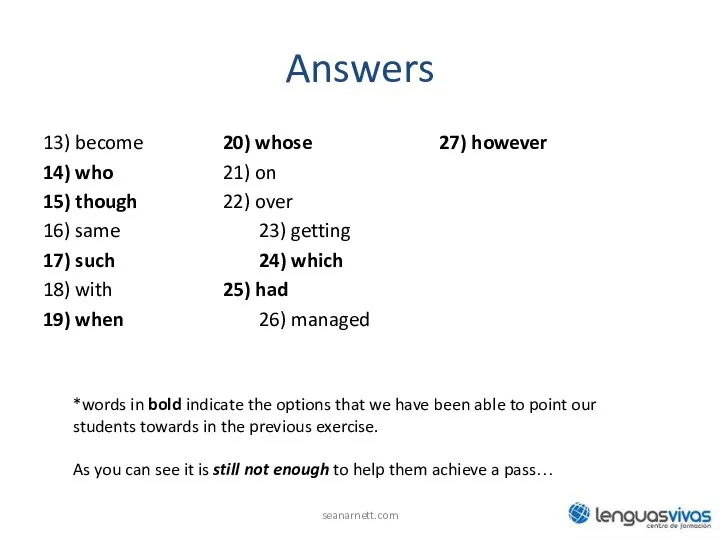
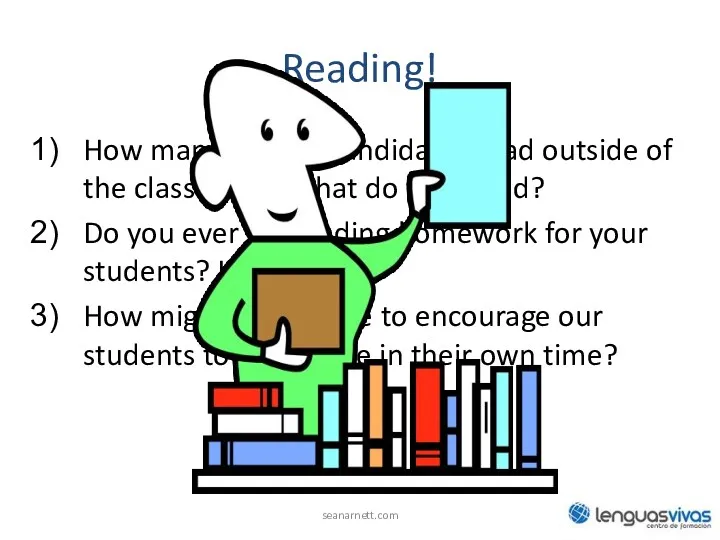
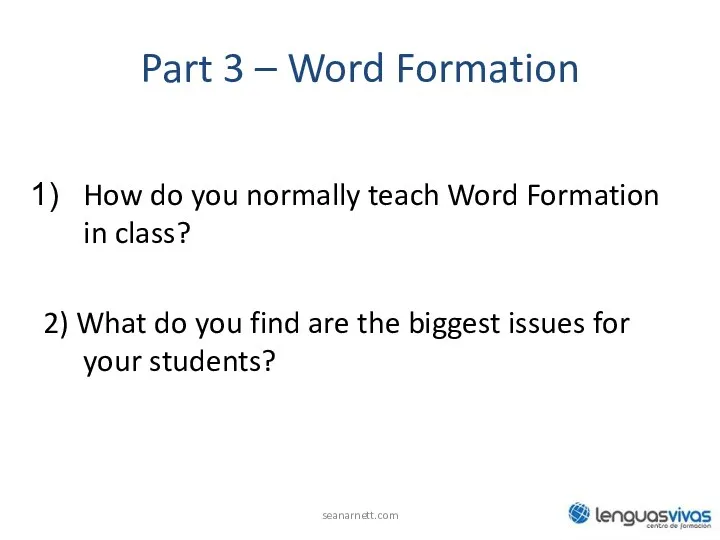
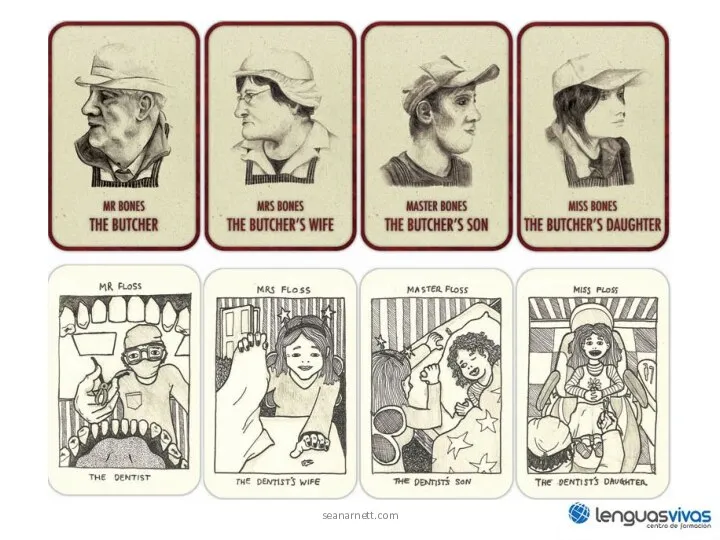
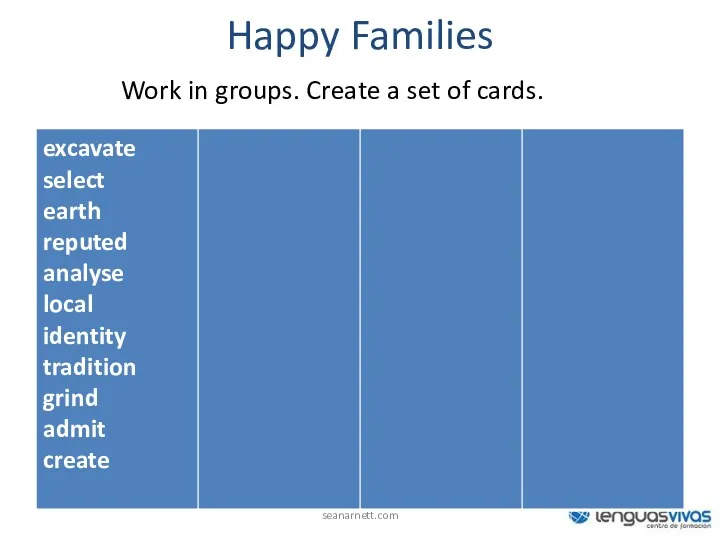
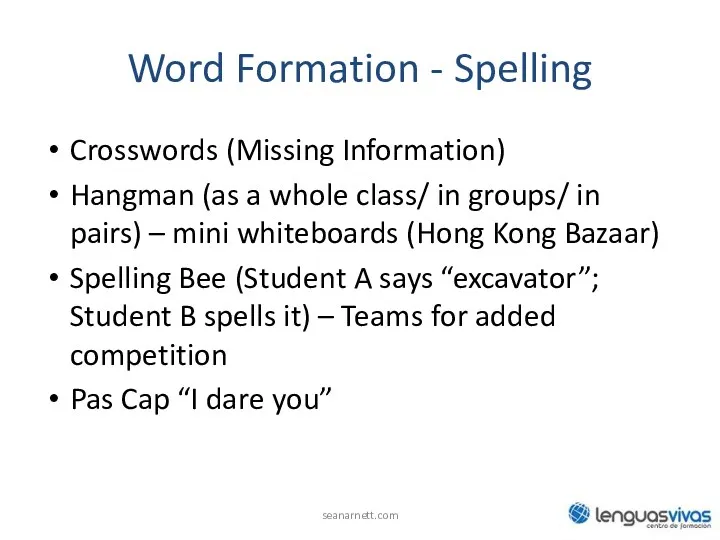
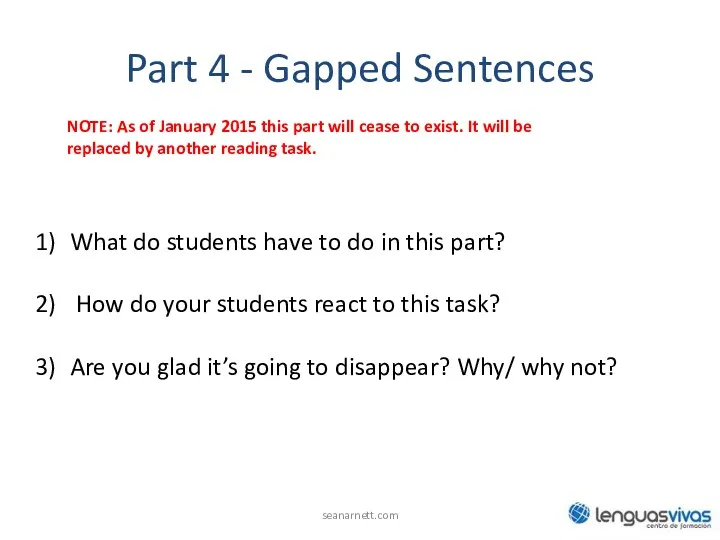
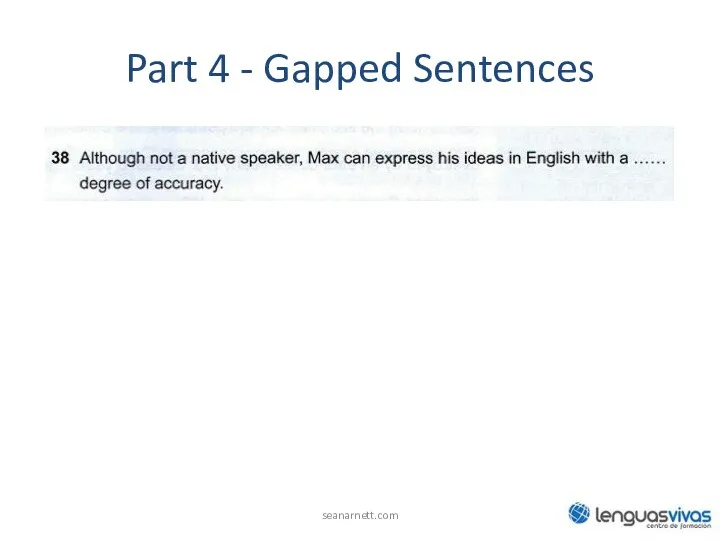
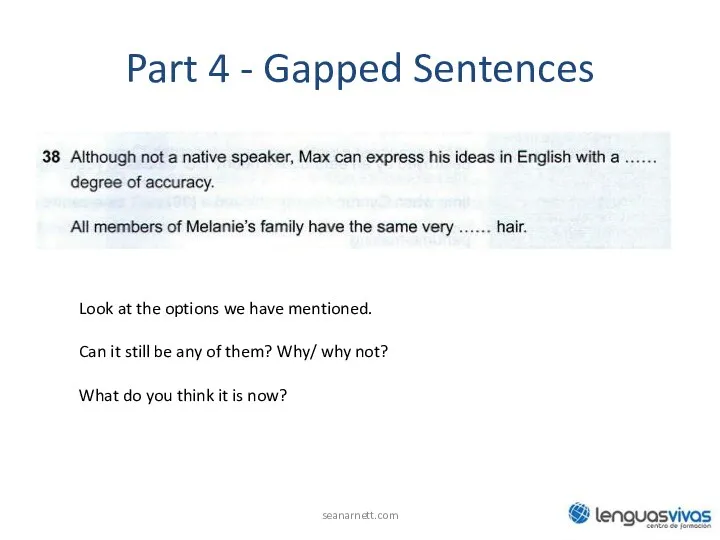
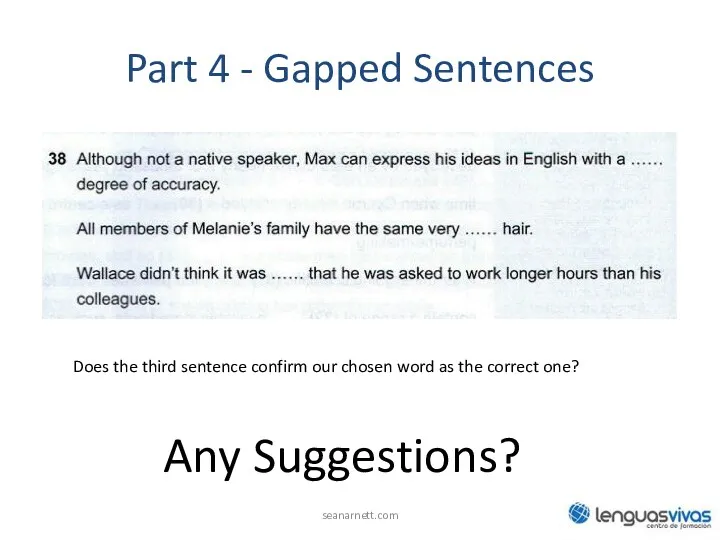
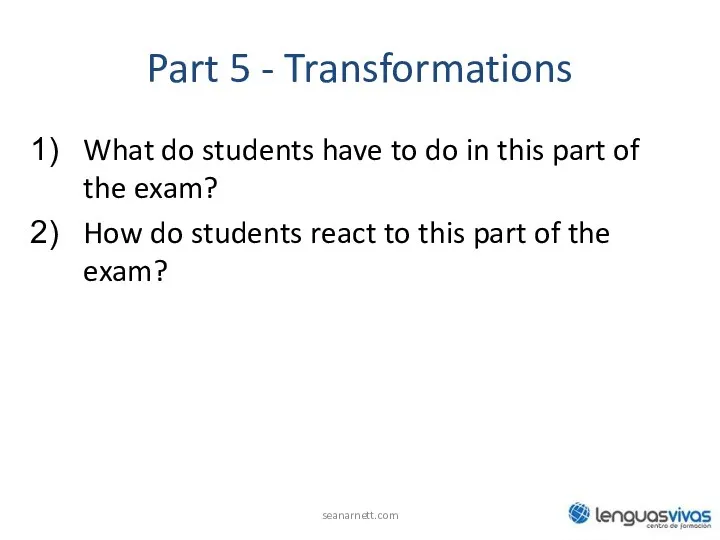
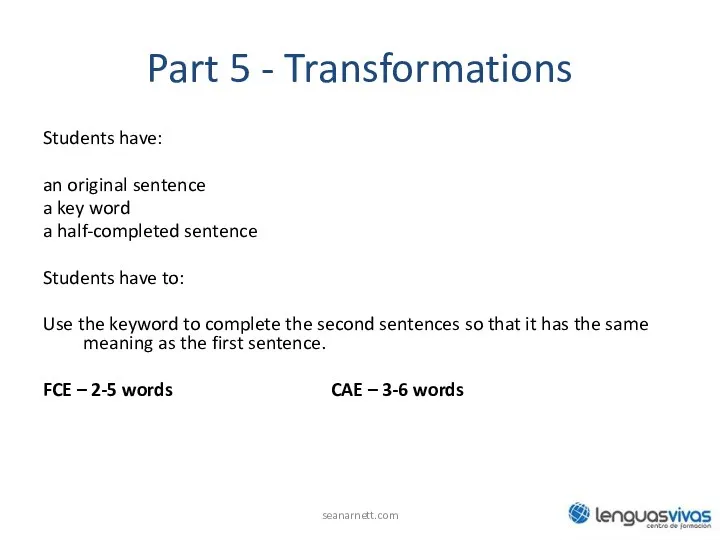
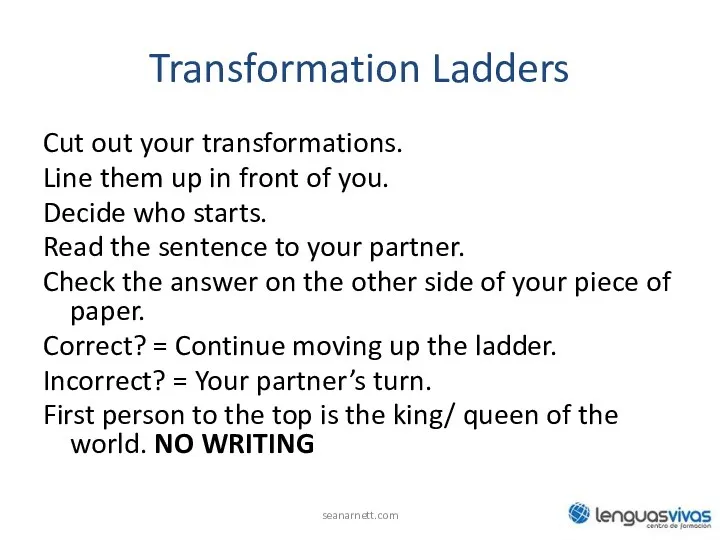
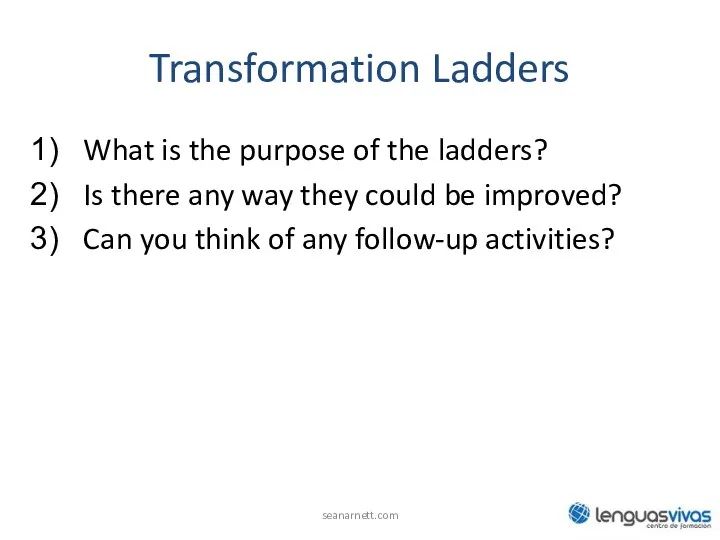
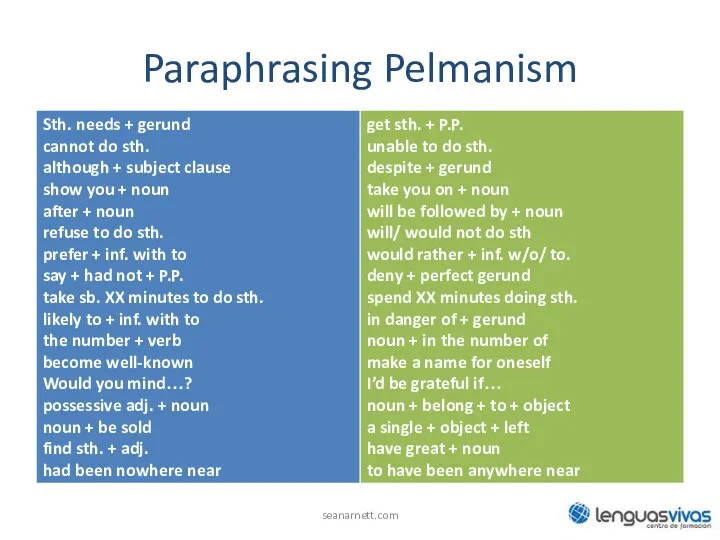
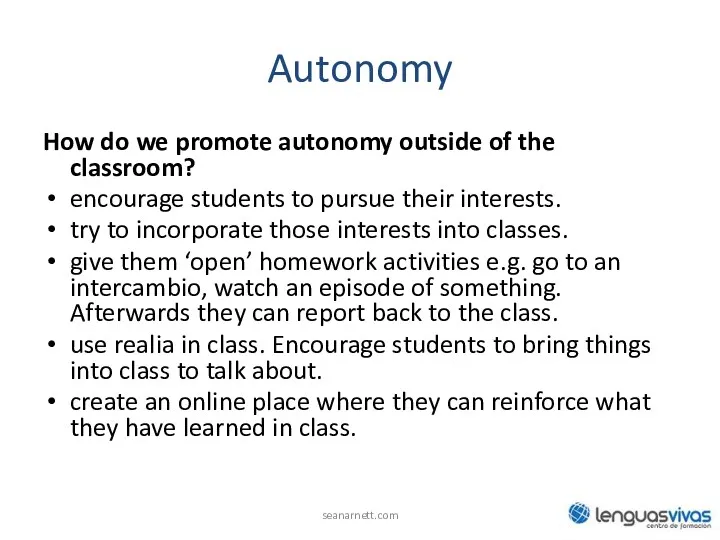
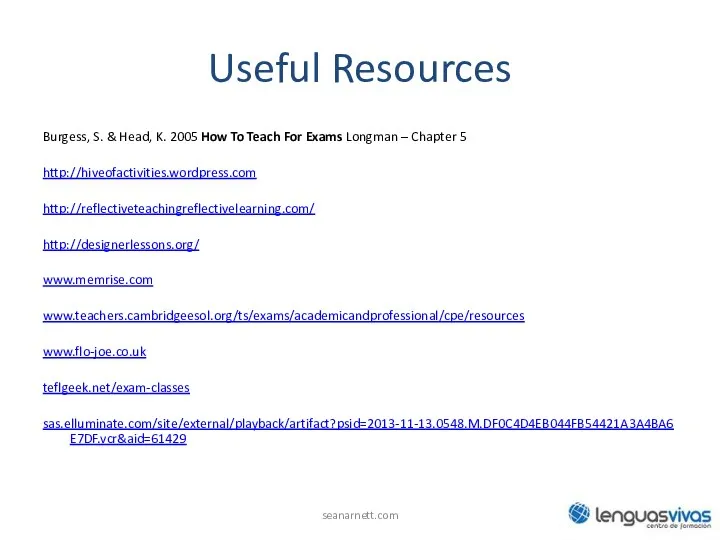
 Body parts
Body parts Fire service of Russia
Fire service of Russia Простое настоящее время (Present Simple)
Простое настоящее время (Present Simple) Michael Jackson
Michael Jackson Popular music of America
Popular music of America The present continuous tense (настоящее продолженное время)
The present continuous tense (настоящее продолженное время) Friendship. Objectives
Friendship. Objectives Dvizh. Lesson 1
Dvizh. Lesson 1 Irregular Verbs
Irregular Verbs The english school in ir theory
The english school in ir theory Phonetic expressive means and devices
Phonetic expressive means and devices Повышение эффективности устной речи на уроках английского языка
Повышение эффективности устной речи на уроках английского языка Общая характеристика глаголов в английском языке
Общая характеристика глаголов в английском языке Как успешно сдать ЕГЭ по английскому языку
Как успешно сдать ЕГЭ по английскому языку Reported speech
Reported speech Dubai internatinal Airport
Dubai internatinal Airport Children games
Children games Dumplings russian national dish
Dumplings russian national dish Development plan of my business. The cafe in style the loft
Development plan of my business. The cafe in style the loft English-speaking countries
English-speaking countries Appearance. Well - dressed, elegant
Appearance. Well - dressed, elegant The greatest artist of our time. David Bowie
The greatest artist of our time. David Bowie Saint Patrick’s Day
Saint Patrick’s Day Extreme sports. 9 класс
Extreme sports. 9 класс Еnglish grammar
Еnglish grammar Adventure Accidents
Adventure Accidents Sports scene
Sports scene Figure skating
Figure skating